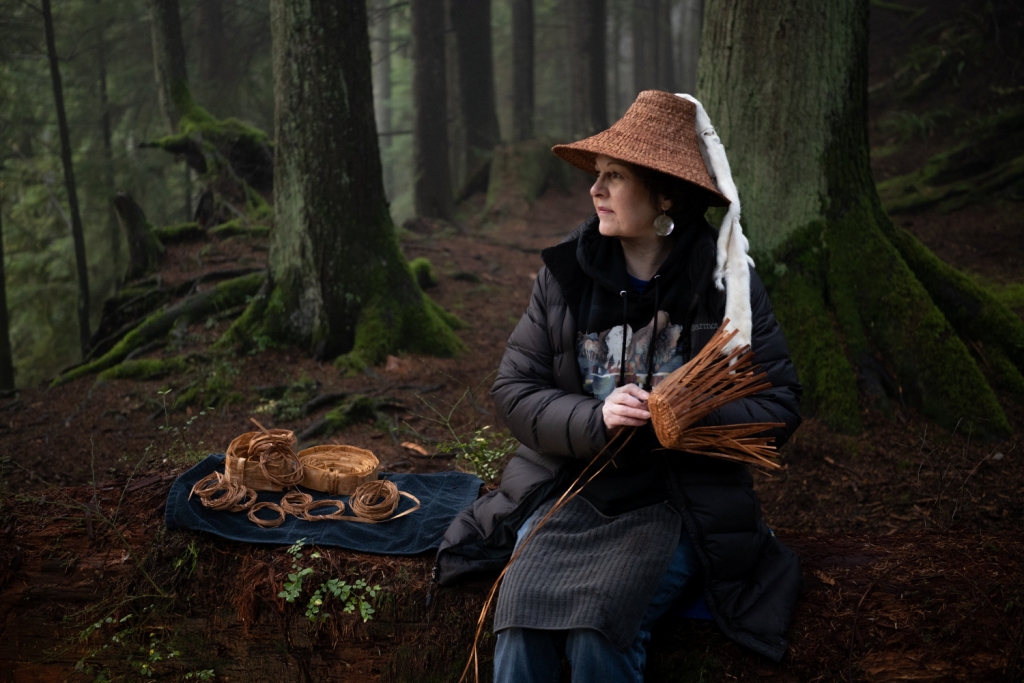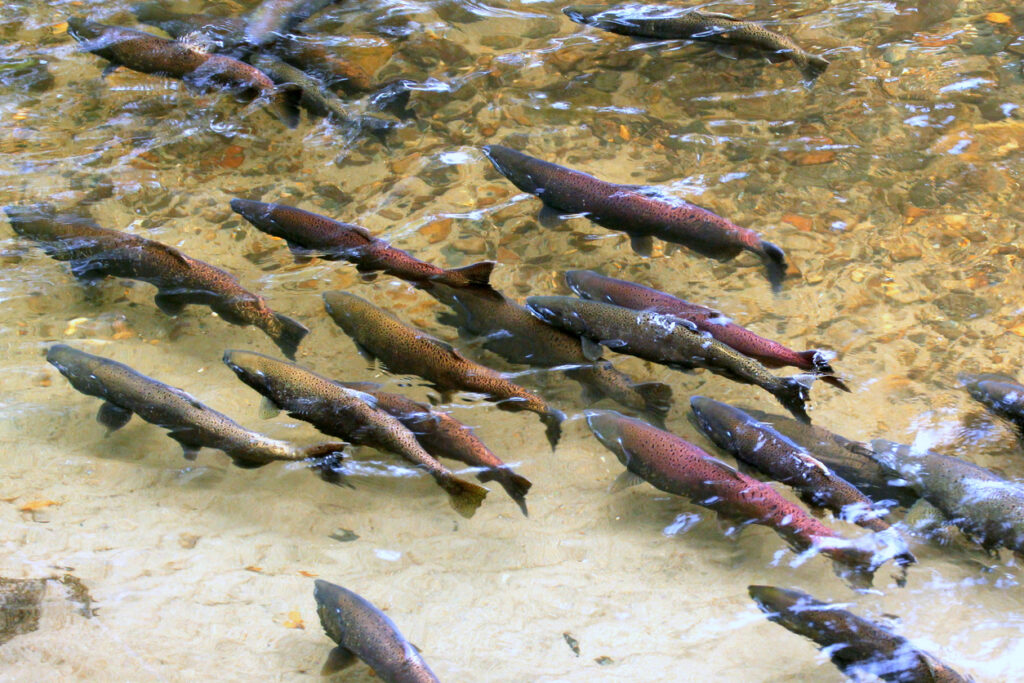Ryan’s research is especially important now, as chinook salmon populations have declined in the past 150 years.
Part of the reason for their decline is the changing climate. It's also due to the impacts of commercial logging and fishing on the environment. Most of British Columbia’s old growth forests have been cut down since the 1860s. This logging has affected the health of the watersheds and the species that live in them.
Trees absorb rainwater and release it gradually for consistent flow of water, while their foliage shades and cools the streams. When trees fall, their trunks and branches provide fish with shelter from predators, and the nutrients released as they decay nourish aquatic plants.
Removing Indigenous methods of environmental stewardship has affected the environment too.
First Nations in the Interior had a historic system of wildfire management. It involved setting controlled fires to clear the underbrush at specific times of year. This would reduce the risk of a more dangerous forest fire during the hottest and driest time of year. These cultural burns also helped the forest regenerate. They increased growth of grasses and plants that, in turn, sustained the health of many animal species.
But this practice was banned by the B.C. government in 1874.
“We disrupted a fire ecology cycle, and we’ve also had intensive clear-cut logging on slope after slope. During the same period, we’re seeing our salmon populations decline,” explains Ryan. “There’s an impact that’s man-made, and it's compounded by what’s going on with the climate.”
Climate change will bring more unpredictable weather, and with it more extreme floods and wildfires. These conditions are even more dangerous without environmental stewardship.
The 2021 wildfire season in B.C. was one of the worst ever recorded. The town of Lytton, B.C., was destroyed by fire after reaching a temperature of 49.6 degrees Celsius. “Losing an entire town is an indication of the intensity of these changes,” says Ryan. “And it also has to do with the way the habitat is being cared for.”
Restoring healthy environments
Responding to climate change will require many different strategies. But Indigenous ways of managing the environment are one way to rebalance these natural systems.
In recent years, First Nations in B.C. Interior have renewed the practice of cultural burning. These methods are now recognized as an effective form of wildfire management. They also improve wildlife habitats and increase the resilience of forests.
Healthier forests will lead to healthier watersheds, by reducing runoff from heavy rain events. This prevents sediment, pesticides and other chemicals from seeping into the water.
In turn, salmon nourish the forests. After they spawn, their bodies provide nutrient-rich fertilizer to the trees . When we pay close attention to the environment, we can see that everything is connected.
By being present and active stewards of our surroundings, and observing the cycles of nature, we can protect the health of our environments and our communities.
Subscribe to our newsletter!


